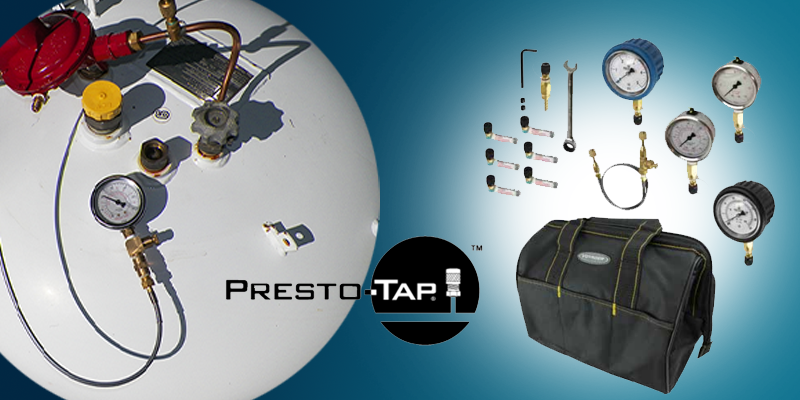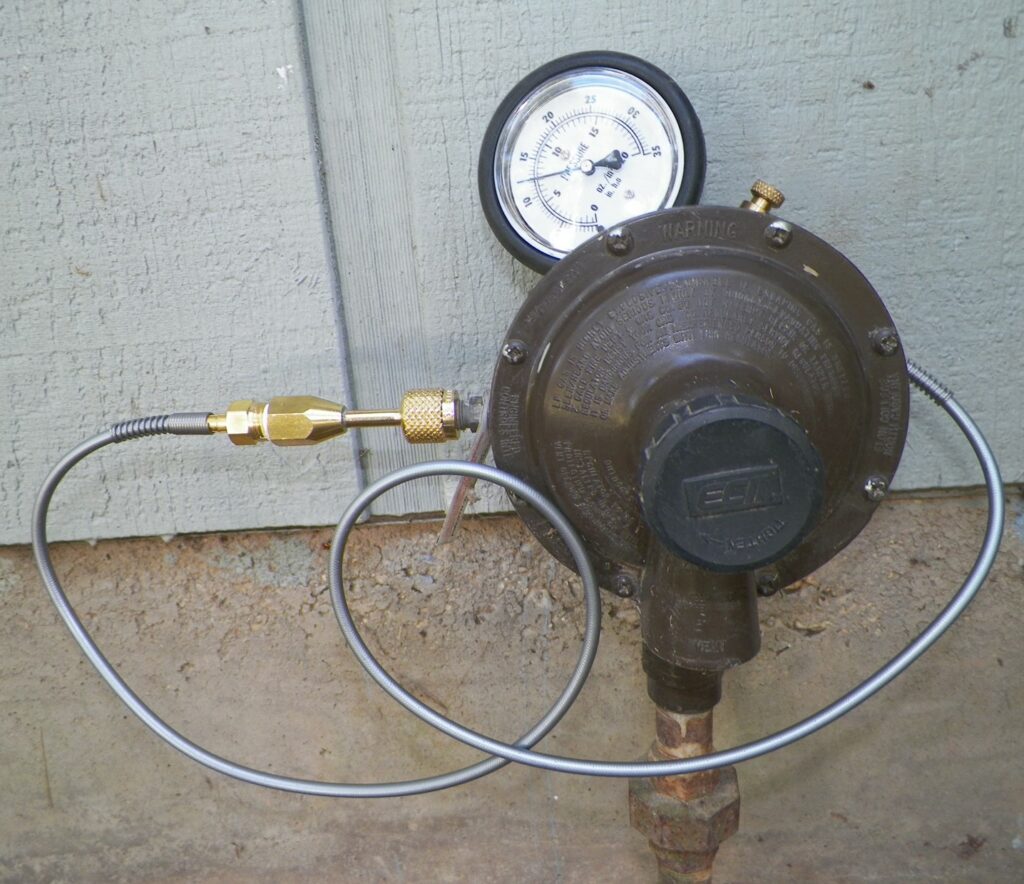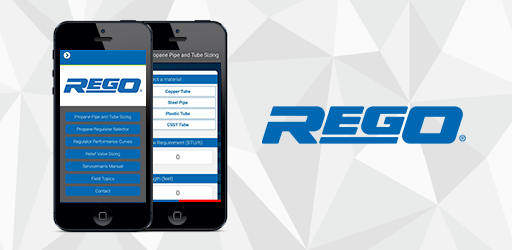Presto-Tap® for Leak Check Purposes
Field Topics are intended to provide useful information to the network of authorized LP-Gas and Anhydrous Ammonia distributors regarding the proper use of RegO® products.
Warning Bulletins covering many of the hazards involved are available from RegO for more detailed information. These bulletins can be found in our L-500, L-102 and NH3-102 catalogs. Neither the Field Topic or the Warning Bulletins are intended to conflict with federal, state, or local ordinances and/or regulations, which should be observed at all times. This information also is not intended to be a substitute for or to supplement any training in the safe handling and use of propane and related equipment, as required by any applicable law. By providing this material, ECI assumes no responsibility for providing any such training. Only individuals properly trained in the safe handling and use of propane and related equipment should be permitted to do so, and by providing this information, ECI does not assume responsibility for providing such training
For more information on LP Gas system requirements, refer to Liquefied Petroleum Gas Code (NFPA 58), National Fuel Gas Code (NFPA 54), National Propane Gas Association Safety Handbook, the RegO LP-Gas Serviceman’s Manual L-545, RegO catalogs L-500/L-102/NH3-102, ANSI K61.1 Safety Requirements for Storage and Handling of Anhydrous Ammonia, as well as any applicable local codes and ordinances.

Presto-Tap® for Leak Check Purposes
This field topic is designed to aid in proper leak check guidelines in accordance with NFPA 58 2020 & NFPA 54 2021. The Presto-Tap PTU-KIT supplies all the necessary components to complete a leak check for the 3 suggested leak check methods. Separate gauge kits are also available for your preferred leak check method. Presto-Taps are available in the Ready to Go RegO® Multivalve, Presto-Tap pigtail and Presto-Tap hogtail. The Presto-Tap LDS2000RV fitting can also be installed in the Pressure gauge port of a multivalve, Regulator and external fittings.
It is important to verify when to do a leak check and/or pressure test. Leak checks are required immediately after the gas is turned on into a new system or into a system that has been initially restored after an interruption of service, the piping system is required to have a leak check performed. Pressure tests are performed to verify the gastight integrity of gas piping following its installation or modification.
Suggested Leak Check Methods
- Tank Pressure Leak Testing
1-1. Attach 300# Gauge to Presto-Tap fitting installed between shutoff valve and first stage regulator
1-2. Admit full container pressure to gas system
1-3. Close shutoff valve and reduce gauge pressure by 10# to insure isolation from tank pressure
1-4. Observe for any increase or decrease in pressure for a minimum of 3 minute, per company procedure and applicable code
1-5. Rise in pressure indicates faulty shutoff valve seat
1-6. Decrease in pressure indicates a leak in system
1-7. Record findings per company policy
Note: A TPF fitting or Presto-Tap pigtail can be used to access tank pressure readings. - First Stage Leak Testing
2-1. Attach 30# Pressure Gauge to Presto-Tap LDS2000/RV
2-2. Turn on service valve charging gas system
2-3. Close service valve and reduce pressure by 2# unlocking regulator so that entire system is communicating with gauge.
2-4.Observe the gauge for any increase or decrease in pressure for a minimum of 3 minute, per company procedure and applicable code..
2-5. Rise in pressure indicates faulty seat in service valve.
2-6. Decrease in pressure indicates a leak in system
2-7. Record findings per company policy - Low Pressure Testing
3-1. Achieved by installing Presto-Tap LDS2000/RV in second stage regulator ports accessing low pressure about 11” w.c.
3-2. Presto-tap gauge, Water manometer, mechanical manometer and electronic manometer can be used with addition of hose barb to Presto-Tap Quick Adapter.
3-3. Close the service valve and release enough pressure to drop the system pressure at 9” w.c. + or – 0.5” w.c.
3-4. Observe the gauge for any increase or decrease in pressure for a minimum of 3 minute, per company procedure and applicable code.
3-5. Rise in pressure indicates faulty seat in service valve.
3-6. Decrease in pressure indicates a leak in system.
3-7. Record findings per company policy.
Note: During any leak check procedure always observe the gauge for a pressure increase. A pressure increase could indicate a faulty service valve.




RegO® APP – Now Available On Apple and Android Devices


Field Topic Conductor :
Paul Courson – Technical Sales Director
40+ years in propane industry.

Field Topic Conductor :
Cody Reeves – LPG Tech. Services Manager
10+ years as a Propane Service Technician including installation and service of gas equipment.
State of CT Licensed Gas & Oil contractor.
Graduated from a Technical high school majoring in HVAC








